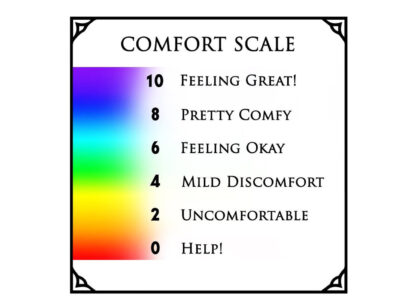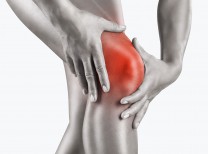Drug overdose is now the leading cause of accidental death in the U.S., with 47,055 lethal drug overdoses in 2014. Opioid addiction is driving this epidemic, with 18,893 overdose deaths related to prescription pain relievers, and 10,574 overdose deaths related to heroin in 2014.
In 2012, 259 million prescriptions were written for opioids, which is more than enough to give every American adult their own bottle of pills. Four in five new heroin users started out misusing prescription painkillers, and 94% of respondents in a 2014 survey of people in treatment for opioid addiction said they chose to use heroin because prescription opioids were “far more expensive and harder to obtain.”
The good news is that in an effort to abate these staggering statics, the U.S. government is now largely publicizing evidence-based studies that show the benefits of complementary (previously termed alternative) therapies for pain management.
Scientists from the National Center for Complementary and Integrative Health (NCCIH) at the National Institutes of Health reviewed 105 U.S.-based randomized controlled trials from 1966 through March 2016. This approach was chosen because of the particular nature of the U.S. health care system, which is relevant to “standard care” or “usual care” in trials and also to licensing requirements (where applicable) for complementary therapies. Their findings, published in September in the Mayo Clinic Proceedings, suggest that some of the most popular complementary health approaches — such as yoga, tai chi, and acupuncture — appear to be effective tools for helping to manage common pain conditions.
“Our goal for this study was to provide relevant, high-quality information for primary care providers and for patients who suffer from chronic pain,” said Richard L. Nahin, Ph.D., NCCIH’s lead epidemiologist and lead author of the analysis. David Shurtleff, Ph.D., deputy director of NCCIH added, “These data can equip providers and patients with the information they need to have informed conversations regarding non-drug approaches for treatment of specific pain conditions.”
The researchers sought evidence on the efficacy, effectiveness, and safety of seven widely-used complementary approaches or groups of approaches: acupuncture; spinal manipulation or osteopathic manipulation; massage therapy; tai chi; yoga; relaxation techniques including meditation; and selected natural product supplements, including chondroitin, glucosamine, methylsulfonylmethane (MSM), S-adenosyl-L-methionine (SAMe), and omega-3 fatty acids.
These approaches were examined in trials of five pain conditions often seen and treated in primary care settings: back pain, osteoarthritis, neck pain, severe headaches and migraine, and fibromyalgia. A trial result on efficacy or effectiveness was termed positive if the complementary approach led to statistically significant improvements in pain severity, pain-related disability, and/or function, compared to the control group. A negative result meant that there was no difference between the intervention and control groups.
The researchers found that the following complementary approaches had more positive than negative results and thus may help patients manage certain painful health conditions:
- Acupuncture and yoga for back pain;
- Acupuncture and tai chi for osteoarthritis of the knee;
- Massage therapy for neck pain—with adequate doses and for short-term benefit; and
- Relaxation techniques for severe headaches and migraine.
Although the evidence was weaker, the researchers also found that massage therapy, spinal manipulation, and osteopathic manipulation may aid some people with back pain, and relaxation approaches and tai chi may help people with fibromyalgia.
Reporting of safety information was low overall, and no trial reported a serious adverse event linked to a complementary approach. The most common adverse events were gastrointestinal problems from glucosamine, chondroitin, MSM, or SAMe. In some trials, there was minor muscle or joint soreness from tai chi and yoga, or minor pain and/or bruising at acupuncture needling sites.
Millions of Americans suffer from persistent pain and often turn to complementary care to help, yet primary care providers have lacked a robust evidence base to guide recommendations on complementary approaches as practiced and available in the United States. The new review gives primary care providers tools to inform decision-making on how to help manage that pain.
The goal of this review – to provide primary care physicians evidence-based data – and the positive results reported are a significant step forward for integrative health care in our country. It also opens the door for additional funding and research in the direction of complementary medicine as Shurtleff adds, “It’s important that continued research explore how these approaches actually work and whether these findings apply broadly in diverse clinical settings and patient populations.”
For additional information, visit the NCCIH Web site at www.nccih.nih.gov.
Sources: 1) American Association of Addiction Medicine. Opioid Addiction: 2016 Facts and Figures. http://www.asam.org/docs/default-source/advocacy/opioid-addiction-disease-facts-figures.pdf. 2) NIH news release: https://www.nih.gov/news-events/news-releases/nih-review-finds-nondrug-approaches-effective-treatment-common-pain-conditions 3) NIH research results: https://nccih.nih.gov/research/results/spotlight/five-painful-conditions.















































Comments (0)